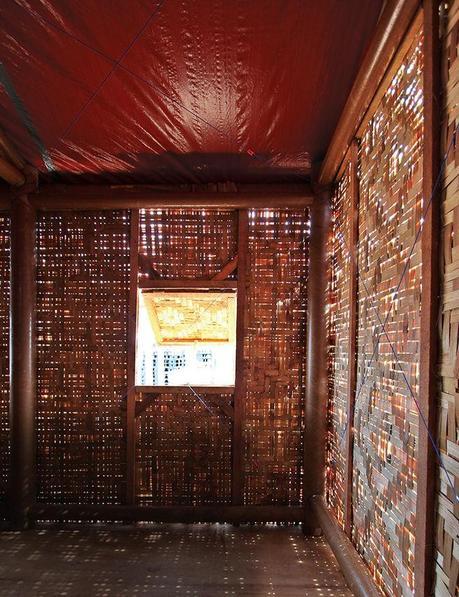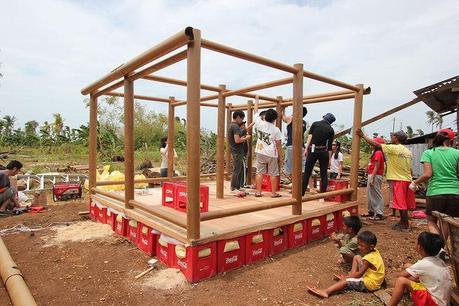
Architect Shigeru Ban has designed temporary shelters for disaster-stricken areas such as Japan, Turkey, New Zealand, India, and the Phillipines.
Image courtesy of Voluntary Architects Network.Following Typhoon Haiyan, which struck the Philippines in November 2013 and displaced three million people, architect Shigeru Ban—winner of the 2014 Pritzker Prize—quickly devised a series of temporary shelters. Though similar in construction to temporary buildings Ban has implemented in disaster-stricken areas in Japan, Turkey, New Zealand, and India, the Philippines shelters were simplified with a paper-tube-and-partition system Ban developed for making barriers for shelters inside evacuation centers. Beer and soda crates filled with sand bags make up the foundations, and the floor panels are coconut wood and plywood. The walls are made from Nypa palm thatching; the same material covers durable plastic sheets to form the ceiling and the roof. Local labor, courtesy of students from the University of San Carlos in Cebu, eliminated construction delays. “Concrete buildings can be destroyed by earthquakes, and are therefore temporary,” Ban says. “If a building, even made of paper, is loved by people, it has become permanent. It’s not about material. For me there is no difference between a temporary and a permanent building.”
Slideshow

The construction was carried out in cooperation with students from the University of San Carlos in Cebu.
Image courtesy of Voluntary Architects Network.